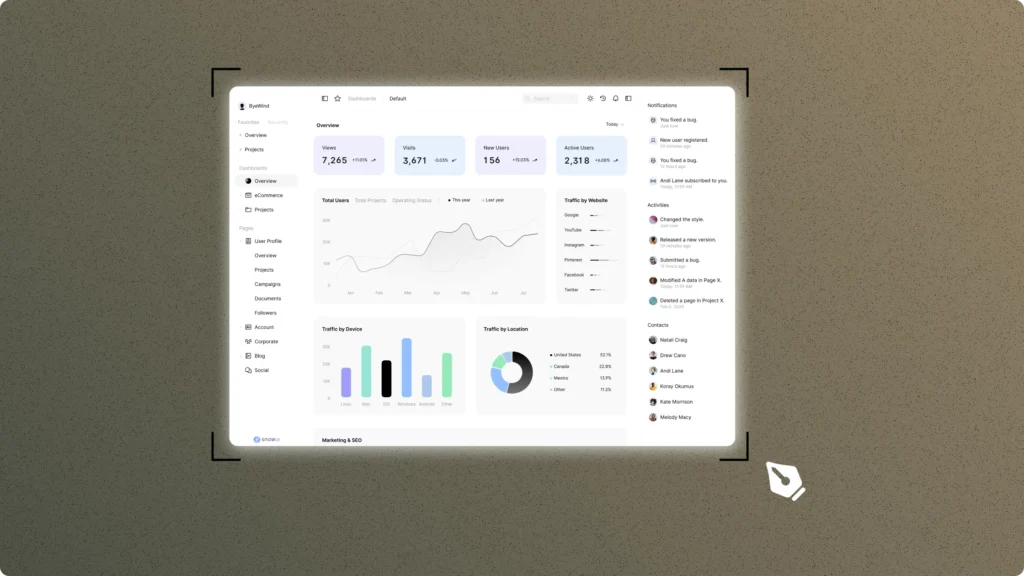In this article, we’ll know about India’s next big mission, the Gaganyaan mission.
Intro:
Rakesh Sharma, Kalpana Chawala, Sunita Williams are the names who make India proud by achieving something that only a few can. Yes, these are the astronauts who make us proud by going into space. But whenever we cheer for these successful people, we also acknowledge that they all went to space but not by an Indian space agency.
- Rakesh Sharma was the first Indian to achieve this beautiful achievment. He flew to space by Soviet Union’s Soyuz T-11 rocket.
- Kalpana Chawala went to space two times by NASA’s Columbia space shuttle.
- Sunita Williams was also sent by NASA to the space and besides that she is the record holder of most spacewalk by a women(7) and most spacewalk time by a women (50 hours, 40 minutes).
But now this is going to change. Cause now for the first time, ISRO is working on a programme/mission that will send humans to the Lower Earth Orbit (LEO). This is Gaganyaan mission.
So let’s have a look at our Gaganyaan, its objective and other things.
Gaganyaan mission:
Gaganyaan is a Crewed Orbital spacecraft. Indian Space Research Organisation(ISRO), Defence Research Development Organisation (DRDO), Hindustan Aeronautics Limited (HAL) and other organisers are collaborating to make this mission successful.
Contributions:
To make this mission successful, the designing part of the crew and service module has done by ISRO and HAL. Whereas DRDO is providing the necessary technologies, radiation measurement devices, space-grade foods and other necessary equipment to the astronauts.
Also,
- Indian Armed Forces
- Indian maritime agencies like, Indian Navy, Indian Coast Guard, National Institute of Oceanography, National Institute of Ocean Technology.
- Indian Meteorological Department
- CSIR Labs
These are the collaborating partners in Gaganyaan Mission.
Modules:
Gaganyaan has two modules.
- Crew Module : This module is designed to carry 3 members to orbit and then safely return to Earth. It is fully autonomous and it’s weight is 5.3 metric tons. The crew module is equiped with 2 parachutes that would help to reduce the speed of the crew module. This will have life support and envioronmental control systems and also will have a Crew Escape System (CES). This will be activate if something bad happen to the rocket.
- Service Module : Service mudule is that part which is used for fuel. The service module is of 2.9 metric tons and powered by liquid propellant engines. The service module propulsion system (SMPS) will help the module to boost its power in LEO. And it will be connected to the crew module untill atmoshpheric reentry. The service module is using a bipropellant system consisting of Mixed Oxides of Nitrogen as oxidizer and MMH (Mono-Methyl-Hydrazine) as fuel, with 5 main engines with 440 N thrust and sixteen RCS (reactioin control system) thrusters of 100 N thrust.
Together the crew module and the service module creates the orbit module which is 8.2 metric tons.
Objective of Gaganyaan mission:
The objective of Gaganyaan is very simple. ISRO is focusing on a sustained human space programme, and this is going to be the first step towards that.
And this mission is going to be in 3 steps, i.e. 2 unmanned missions and 1 manned mission. These three flights will be to the LEO
- Gaganyaan 1 : This is going to be the first orbital test flight which is going to be unmanned/ non-crewed mission.
- Gaganyaan 2: This is going to be the sencond orbital test flight of the Gaganyaan capsule which will be also unmaaned flight. Means here also no crew memeber will be in the mission.
- Gaganyaan 3: Finally this will be the first crewed flight of Gaganyaan mission which will carry upto 3 astronauts.
Here is the timetable of the 3 test flights given below.
| Flights | Date of flight |
| Gaganyaan 1 | June, 2022 |
| Gaganyaan 2 | 2023 |
| Gaganyaan 3 | 2023 |
Gaganyaan 1 & 2 are for safety and technology demonstration and reliability verification purposes. This will help scientists to study the results and understand the performance of the systems which is helpful for the crewed mission. So, that’s why the non-crewed missions are playing a very important role in the main mission.
Technologies:
- Human rated launch vehicle : Special type of launch vehicle that can safely transport humans.
- Crew escape systems : The Crew Escape System is an emergency escape measure designed to quickly pull the crew module along with the astronauts to a safe distance from the launch vehicle in the event of a launch abort. –ISRO
- Life support system : It is an artificial or natural system that provides oxygen, food, water, control of temperature and pressure, disposition of carbon dioxide and body wastes which are necessary for maintaining life or health.
- Habitable orbital module
- Crew selection and training and associated crew management activities
These are the major technologies that are required for Gaganyaan.
Benefits and cost:
Gaganyaan is going to be our first Human spaceflight programme and it will give some great benefits to our nation, like-
- Progress towards a sustainable and affordable human spaceflight programme to explore our solar system and beyond.
- It will increase our capability to actively collaborate in global spacestation development in future.
- This mission will help us make a broad frame work for wider Academia – Industry partnership in taking up development activities for national development.
- The programme will strengthen international partnerships and global security through the sharing of challenging and peaceful goals.
There are more benefits that we’ll get from this mission.
Gaganyaan programme’s total cost is approx ₹9023 crores. It is almost 65 rupees per head of Indians which is not that much costly.
Journey of Gaganyaan mission:
- Gaganyaan will be launched from Satish Dhawan Space Centre which is in Sriharikota, Andhrapradesh.
- To launch Gaganyaan ISRO is using GSLV Mk-III as the launch vehicle. It is the same launch vehicle that was used in the Chandrayaan 2 mission.
- After 16 mins of liftof the rocket will inject the Gaganyaan spacecraft to around 400 km above Earth’s surface. After that the spacecraft will spend 7 days in space.
- Then when the spacecraft will return to Earth, service module will detach from the crew module and the crew module will return to Earth.
- Finally the crew capsule will land in the Bay of Bangal.
The method of landing of a spacecraft by parachute into the sea is called as Splasdown method.
References:
Here are the references from which I’ve got this information. So if you want to know more then visit through these links.
Read about Space:
Space Archives • Scientific World (scientyficworld.org)
Thanks for reading.






